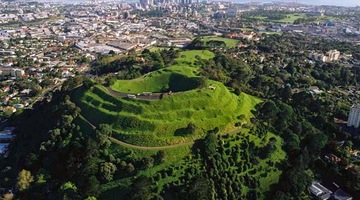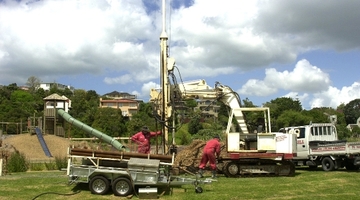Dr Darren Gravley takes us into the field and describes the work of a geologist. Looking at a rocky outcrop. he describes what geologists are looking for and what the rocks can tell them about volcanic eruptions.
Transcript
DR DARREN GRAVLEY
There’s a few things that this rock can tell us. It can tell us a little bit about the original magma body that broke its way to the surface and erupted. If we look at some of the bits on top and if we look in a cross section, we can see that there is layering. So we’ve got a dark coarser layer here with more juvenile magmatic material and then a lighter layer here with finer sedimentary rock material that was broken up upon eruption.
So with this rock, we can start making some guesses as to what happened during the eruption. So if you think about this rock is from a locality here, we are at a certain distance from the volcanic source, yet we’ve got different sized material. So the different densities and sizes of the rock tell us that the intensity of the eruption might have been greater associated with the coarser material falling here and probably not as great where we get the finer material. Because if you think of stuff that – even if it falls out of the sky or falls through a water column – things are separated out due to their densities.
So that is how we sort of get these sort of lighter and darker bands. They are not only related to the magma coming through, but they are also related to, once that magma punches through, how these particular particles behave in the atmosphere. Some fall faster than others.



